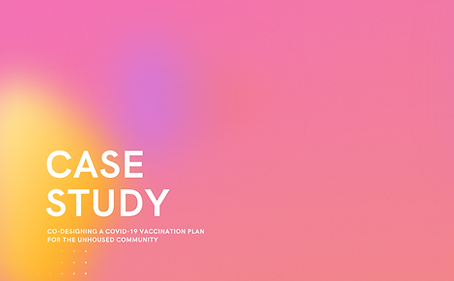Avital Glibicky.
Simple Complexity
The Journey to Co-Design
with the Unhoused Community
of San Lorenzo Park in Santa Cruz, CA

Phase I
Ethnography & Building a Framework

Designers must actively work to decenter themselves and allow the Unhoused Community at the receiving end of infrastructural defunding to actively engage in the co-design process alongside community organizers, activists, and non-profit organizations.
Cultural Probe at Food Not Bombs
Safe Space Cultural Probe to establish contact, build relationships and survey the worries, needs, and hopes of the patrons of Food Not Bombs.
Wishing Tree
The Wishing Tree Conceptual Model aims to spotlight the talents of the unhoused residents of Santa Cruz and foster communication and collaboration between the housed and unhoused community members.
_edited.jpg)
_edited.jpg)
Letters that Heal
Workshop
A therapeutic letter-writing workshop
co-designed with Food Not Bombs aimed to provide a space for unhoused community members to express their uncensored thoughts and feelings on paper.
Cultivating agency was key so each person was given the choice to destroy (shred) or share their letter after completion.
_edited.jpg)

Video illustrating imagined (not realized) Wishing Tree environment with unhoused individual stories playing on speakers surrounding the tree.
Phase II
Capstone Begins
Cultivating Trust & Defining Community Needs

Facilitating discussion with unhoused individuals and their representatives helps those working to co-design and introduce new processes to the community gain a wider understanding of the realities to avoid unintentional consequences as a result of the work.
.png)
In the span of three weeks, the entire focus of the capstone drastically changed as a result of Santa Cruz city council rulings as well as vaccine availability.
Barriers & Pathways
to Co-Design
Lessons Learned
Map Short-Term
& Long-Term Needs
Stakeholder Map
Involving key stakeholders and unhoused community members can reveal the unintended consequences and key insights that would not have been visible otherwise.
Core Pain Point,
Need Discovery,
and Opportunity

Barriers to co-design reinforce top-down societal hierarchies, while pathways aim to build cooperative projects through solidarity, knowledge sharing, and active participation.
Phase III
Making It Happen
Undoubtedly, the most important moment in the Capstone was the realization that once the residents of San Lorenzo Park were vaccinated, the city of Santa Cruz would have reason to evict them from the park.

Working with community members that are directly impacted by the design implementation can provide insights into the specific needs, goals, values, and perspectives of those community members not yet captured through the work of other methodologies.


Designers have a responsibility when entering into marginalized spaces, to address community concerns and needs first. Through engagement, designers can then encourage assessment and leadership building from within the community.
Establish Stakeholder Concerns & Solutions
Single Dose Vaccination is preferred, because tracking unhoused residents for a second dose proves very difficult.
Iterate & Finalize Vaccination User Flow
Consensus & Enacting Vaccination Plan
The most important ingredient to successful co-design with unhoused communities is transparency.
Disagreement is natural between collaborators, but it is also a means for a path forward through mediation if there is mutual respect and the sharing of knowledge.

Update March 25, 2021
Final Output
Case Study
A teaching tool and a glimpse into the possible coordination efforts by community groups.
It is created for designers and community organizers working with marginalized communities.
User Flow Tool
A User Flow Tool designed for co-design sessions between unhoused representatives and health professionals with access to vaccines.

A Guide to Working
in Homeless Spaces
Instagram Story Series
Published on the Food Not Bombs Instagram in celebration of its 40th Anniversary and to be printed in zine form and shared at bookstores (in Santa Cruz and New York City) dedicated to social activism.

























.jpg)




